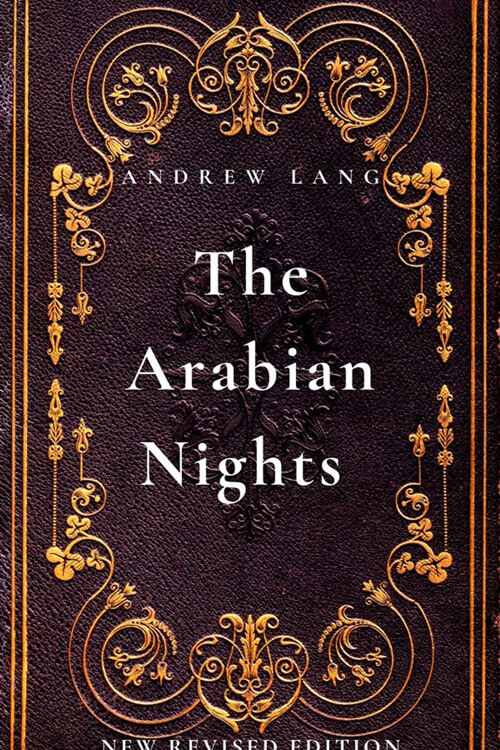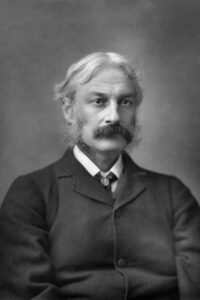
The Arabian Nights
The main frame story concerns Shahryār, whom the narrator calls a “Sasanian king” ruling in “India and China”. Shahryār is shocked to learn that his brother’s wife is unfaithful. Discovering that his own wife’s infidelity has been even more flagrant, he has her killed. In his bitterness and grief, he decides that all women are the same. Shahryār begins to marry a succession of virgins only to execute each one the following day before she has a chance to dishonour him. Eventually, the Vizier (Wazir), whose duty it is to provide them, cannot find any more virgins. Scheherazade, the vizier’s daughter, offers herself as the next bride, and her father reluctantly agrees. On the night of their marriage, Scheherazade begins to tell the king a tale but does not end it.
The king, curious about how the story ends, is thus forced to postpone her execution to conclude. The next night, as soon as she finishes the tale, she begins another one, and the king, eager to listen to the conclusion of that tale as well, postpones her execution once again. This goes on for one thousand and one nights, hence the name. The tales vary widely: historical tales, love stories, tragedies, comedies, poems, burlesques, and erotica. Numerous stories depict jinn, ghouls, ape people, sorcerers, magicians, and legendary places, often intermingled with real people and geography, not always rationally. Familiar protagonists include the historical Abbasid caliph Harun al-Rashid, his Grand Vizier, Jafar al-Barmaki, and the famous poet Abu Nuwas, even though these figures lived some 200 years after the fall of the Sassanid Empire, in which the frame tale of Scheherazade is set. Sometimes, a character in Scheherazade’s tale will begin telling other characters a story of their own, which may have another one told within it, resulting in a richly layered narrative texture. Versions differ, at least in detail, as to final endings (in some, Scheherazade asks for a pardon; in some, the king sees their children and decides not to execute his wife; in some others, things happen that make the king distracted) but they all end with the king giving his wife a pardon and sparing her life. The narrator’s standards for what constitutes a cliffhanger seem broader than in modern literature.
While in many cases, a story is cut off with the hero in danger of losing their life or another kind of deep trouble, in some parts of the full-text, Scheherazade stops her narration in the middle of an exposition of abstract philosophical principles or complex points of Islamic philosophy. In one case, during a detailed description of human anatomy according to Galen—and in all of these cases, she turns out to be justified in her belief that the king’s curiosity about the sequel would buy her another day of life.
Read or download Book
Andrew Lang
Andrew Lang FBA (31 March 1844 – 20 July 1912) was a Scottish poet, novelist, literary critic, and contributor to anthropology.
Biography
He is best known as a collector of folk and fairy tales. The Andrew Lang lectures at the University of St Andrews are named after him. Lang was born in 1844 in Selkirk, Scottish Borders. He was the eldest of the eight children born to John Lang, the town clerk of Selkirk, and his wife Jane Plenderleath Sellar, the daughter of Patrick Sellar, factor to the first Duke of Sutherland. On 17 April 1875, he married Leonora Blanche Alleyne, the youngest daughter of C. T. Alleyne of Clifton and Barbados. She was (or should have been) variously credited as the author, collaborator, or translator of Lang’s Color/Rainbow Fairy Books, which he edited. He was educated at Selkirk Grammar School, Loretto School, and the Edinburgh Academy, as well as the University of St Andrews and Balliol College, Oxford, where he took a first class in the final classical schools in 1868, becoming a fellow and subsequently honorary fellow of Merton College.
He soon made a reputation as one of the most able and versatile writers of the day as a journalist, poet, critic, and historian. He was a member of the Order of the White Rose, a Neo-Jacobite society that attracted many writers and artists in the 1890s and 1900s. In 1906, he was elected FBA. He died of angina pectoris on 20 July 1912 at the Tor-na-Coille Hotel in Banchory, Banchory, survived by his wife. He was buried in the cathedral precincts at St Andrews, where a monument can be visited in the southeast corner of the 19th-century section. Lang’s writings on Scottish history are characterized by a scholarly care for detail, a piquant literary style, and a gift for disentangling complicated questions. The Mystery of Mary Stuart (1901) was a consideration of the fresh light thrown on Mary, Queen of Scots, by the Lennox manuscripts in the University Library, Cambridge, approving of her and criticizing her accusers. He also wrote monographs on The Portraits and Jewels of Mary Stuart (1906) and James VI and the Gowrie Mystery (1902).
The somewhat unfavourable view of John Knox presented in his book John Knox and the Reformation (1905) aroused considerable controversy. He gave new information about the continental career of the Young Pretender in Pickle the Spy (1897), an account of Alastair Ruadh MacDonnell, whom he identified with Pickle, a notorious Hanoverian spy. This was followed by The Companions of Pickle (1898) and a monograph on Prince Charles Edward (1900). 1900, he began a History of Scotland from the Roman Occupation (1900). The Valet’s Tragedy (1903), which takes its title from an essay on Dumas’s Man in the Iron Mask, collects twelve papers on historical mysteries, and A Monk of Fife (1896) is a fictitious narrative purporting to be written by a young Scot in France in 1429–1431






